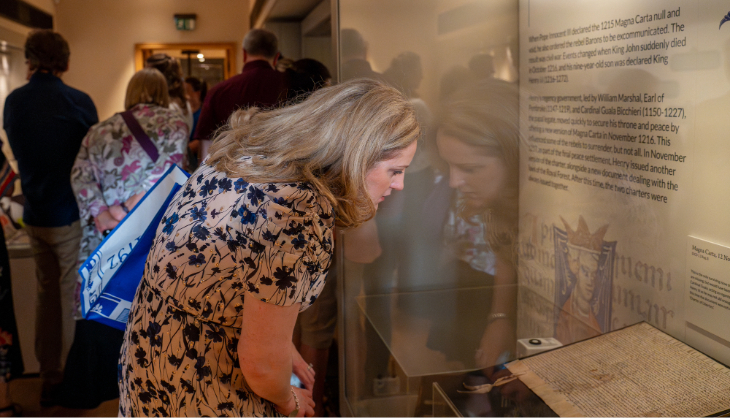Step Back in Time – 2000 years of Northeast History to explore
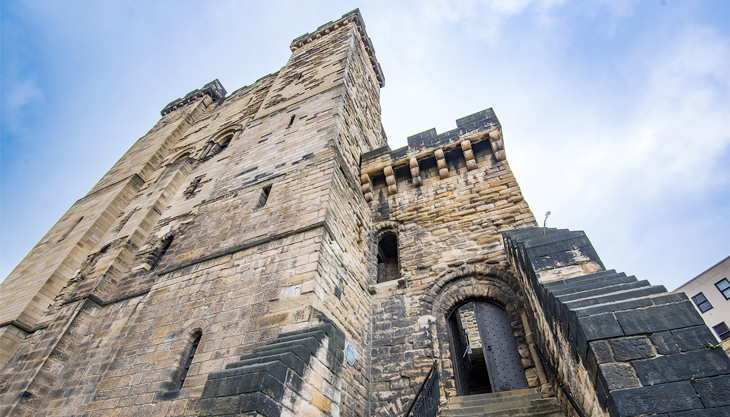
You don’t need a time machine to travel back in time. Get hands on with history at heaps of local north east attractions where the past comes to life before your eyes…
Ancient Egyptians (3000 BC – 650 AD):
The Great North Museum: Hancock has the North East’s best display of ancient Egyptian artefacts. You can see the mummies of Irtyru and Bakt en Hor, replicas of the Rosetta Stone and Tutankhamun’s death mask, plus an impressive statue of Rameses II.
The Romans (27 BC – 476 AD)
As the most northerly frontier of the Roman Empire, our region is rich in Roman history, most notably Hadrian’s Wall of course. The perfect place to start your Hadrian’s Wall adventure is the Roman Army Museum. Here you will feel like you’ve been transported back 2,000 years to find out what life was really like on the edge of an empire. Your ticket combines with a visit to what is arguably the most important site along the wall, Vindolanda, which recently celebrated the 50th anniversary this year since the excavations first began. There are many places to walk along the route of the wall; take a picnic and enjoy the dramatic countryside at Steel Rigg, Sycamore Gap and Cawfields Quarry. Visit www.visitnorthumberland.com/hadrians-wall/walking-routes for information.
Furthest east, tucked away by the River Tyne at Wallsend, is Segedunum Roman Fort. Segedunum, which means ‘Strong Fort’, was built to guard the eastern end of Hadrian’s Wall and was once home to 600 Roman soldiers. It stood for almost 300 years as a symbol of Roman rule and a bastion against barbarian attack. From the 35 metre viewing tower you can look out across the former fort to see the outlines of barrack blocks and stables, the headquarters building and the commander’s house, and take in spectacular views of the River Tyne and surrounding area.
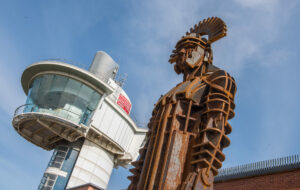
Across the river in South Shields the Roman Fort of Arbeia is a Unesco World Heritage Site with the finest full scale reconstructions in the country showcasing some of the most significant finds from that time.
Anglo Saxons 5th – 10th Century
Preston Park Museum, Stockton has over 2,000 fascinating pieces in its archaeology collection. On display you can see Anglo Saxon beads, brooches, a comb, ear scoop and iron spearhead. The finds are from a number of significant sites, including the 120 Anglo-Saxon graves excavated at Norton. The collection also includes Britain’s only Viking Helmet, from Yarm.
Jarrow Hall – Discover the incredible world of Anglo-Saxon Northumbria and the extraordinary life of Bede – the father of English history. Set across 11 acres, Jarrow Hall features a museum dedicated to exploring the life and legacy of Bede, alongside reconstructed Anglo-Saxon dwellings and an extensive farm home to rare-breed and rescued animals.
Holy Island of Lindisfarne – there is much to see and do on this tiny tidal island in North Northumberland. It is known as the Cradle of Christianity. The first Anglo-Saxons to live here named it Lindisfarne then the monks of Durham, after the Norman conquest, added the words Holy Island when they looked back over the story which began with the coming of Saint Aidan and the building of the first monastery in 635AD, continued with the ministry of the “very popular” Saint Cuthbert and then received a staggering blow from the Viking attack in 793.
Please take heed of the tide times! The refuge tower on the causeway is NOT where you want to spend the afternoon waiting for the tide to turn.
The Normans – 1066 and beyond to the Middle Ages
Newcastle Castle – Newcastle Castle is a family-friendly, historic visitor attraction located in the centre of Newcastle upon Tyne. Steeped in history, it reveals the story of how Newcastle began and the reason the City got its name. Children will love discovering all the nooks and crannies in the Castle Keep and the views from the rooftop are truly magnificent!
Durham Castle – uncover 1,000 years of history in the undefeated Castle on a guided tour. Built in the Norman period as an imposing fortress, Durham Castle’s story is entwined with that of the Prince-Bishops of Durham, whose semi-regal status made them some of the most powerful and wealthy men in the country. Durham Castle was transformed into a lavish palace and from the Victorian period into a place of learning.
Durham Cathedral – a Unesco world heritage site. Explore Durham Cathedral, one of Europe’s greatest medieval buildings, and quite frankly the most awe-inspiring cathedral in England (in my opinion*). Visitors aged 8+ can climb to the roof for incredible views over Durham city.
Auckland Castle – journey through time at Auckland Castle, County Durham and meet the powerful Prince Bishops, who once called the castle home. Rummage through the drawers, sit around the dining table and play your way through 1,000 years of history, as animation, sounds and projections bring the Bishops’ stories vividly to life. A self-guided family trail is available to help visitors of all ages follow in the bishops’ footsteps, while special family-focussed events also run on selected dates throughout the year.
Raby Castle – explore more than 600 years of history at Raby Castle in Co Durham. Built by the mighty Nevill family (that’s correct, there’s no e at the end) in the 14th century and is one of the finest and best-preserved medieval castles in North East England.
Northumberland’s Castles – too many to mention, we have some of the most amazing castles and more than any other county in England. Being on the border with Scotland, the North East has seen countless battles between royal rulers and skirmishes between the local Border Reivers. Our history is amazing and so is the countryside that it sits in. Bamburgh, Alnwick, Dunstanburgh, Lindisfarne, Warkworth, Prudhoe, Chillingham, Berwick, Etal, Kielder, Belsay and about 60 more! Go and explore! visitnorthumberland.com
The 1700-1800s
The Captain Cook Birthplace Museum is close to the site of Cook’s birthplace in Stewart Park, Middlesbrough. The museum tells the story of one of the world’s greatest navigators and mariners through themed display galleries, temporary exhibitions, associated activities and events.
Ormesby Hall, Middlesbrough was the home of the Pennyman family for nearly 400 years. In the early 18th century Ormesby Hall and its surrounding parkland were at the centre of a large farming estate stretching up to the banks of the River Tees. Today, they stand alone, as a rural enclave in the suburbs of Middlesbrough, looked after by the National Trust. Explore the house including a Victorian kitchen & laundry, three permanent interactive model railway layouts, extensive gardens & parklands.
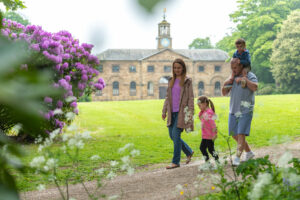
Wallington Hall, Northumberland – built by the wealthy Blackett family in 1688 on a site previously owned by the Fenwicks (are you getting the NE connections here? ) the Wallington estate is a 13000 acre pleasure ground with beautiful rolling countryside and lots of historical interest.
National Museum of the Royal Navy, Hartlepool – travel back in time to an 18th century seaport. See the spectacular HMS Trincomalee, the oldest warship still afloat in Europe & meet sailors from the Georgian Navy who lived on board. Experience the explosive firepower of guns with exciting live demonstrations and re-enactments all year round. Let your little ones loose at the Children’s Maritime Adventure Centre and on board the brand new the adventure play ship.
Gibside, Rowlands Gill is one of a few surviving 18th-century designed landscapes and was fashioned with two things in mind: spectacular views and ‘wow’ moments. It is a haven of nature and fun for children of all ages.
Seaton Delaval Hall – The Delavals were loyal supporters of William the Conqueror and they were gifted land in Northumbria in the 1080s as a reward for their help at the Battle of Hastings. The current hall was built in the 1720s and had a reputation as a huge party house (true Geordies then!)
The Victorians and the Industrial Revolution
Head of Steam, Darlington Railway Museum – imagine stepping back in time to Victorian Darlington. Venture into an original 1840’s railway station and explore the platform that still has its original footbridge, booking office, waiting room, newspaper kiosk and Victorian toilets. Journey through time and admire the four historic locomotives including star attraction, Stephenson’s Locomotion No1. The Head of Steam now has a working replica of Locomotion No 1 (original to Shildon) which will run in the Stockton and Darlington railway anniversary celebration in 2025.
The Victoria Tunnel, Newcastle – explore the Victorian inventiveness when they built an underground wagonway to carry coal under the city of Newcastle upon Tyne to the river. The Victoria Tunnel was so well-built that it was re-used as an air-raid shelter during World War 2 and is now open for one- and two-hour underground tours. They are suitable for anyone aged 8 years and over and are so popular it is essential to book ahead.
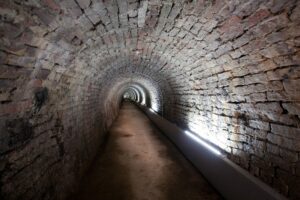
The Bowes Museum, Barnard Castle was created over 100 years ago by an extraordinary couple, John and Joséphine Bowes. Together they built up the greatest private collection of fine and decorative arts in the North of England and constructed a magnificent building to house them in. The collection contains thousands of objects including furniture, paintings, sculpture, ceramics, textiles and many other items covering an extensive range of European styles and periods.
Ford & Etal Estate, Northumberland. The Lady Waterford Hall was commissioned by Louisa, Marchioness of Waterford in 1860 and served as the village school until the 1950s. Lady Waterford employed a teacher and paid for the education of the children who lived (and worked) on Ford Estate. In the hall there are hands-on ‘school room’ activities for children and the murals and artworks are absolutely stunning. There’s also a short DVD which tells the fascinating and tragic story of Louisa.
Heatherslaw Cornmill, Northumberland dates back several centuries but much of the building we see today is from the Victorian era and the milling process is carried out by fully restored and operational 19th century machinery. There are lots of interactive opportunities and social history which make this a wonderful place to explore. In school holidays there are also baking days for children.
Killhope Lead Mining Museum, Co Durham – a multi-award winning 19th century mining museum in the centre of the North Pennines Area of Outstanding Natural Beauty where you can experience the life and work of the lead mining families of the North Pennines.
Locomotion – see highlights of the national collection of railway vehicles in the world’s first railway town. The town of Shildon has had an exciting story to tell since the earliest days of the rail industry, making it the perfect place to explore the rich seam of local railway history and discover how the railways have changed all our lives.
Beamish, The Living Museum of the North. Hop aboard a tram and travel back in time to the 1820s, early 1900s, 1940s and 1950s at Beamish, The Living Museum of the North. Be immersed in this multi-award winning museum as you discover the amazing sights, sounds, smells and delicious tastes of the past.
Kirkleatham Museum is the local heritage museum for the borough of Redcar and Cleveland. It is home to a treasure trove of artefacts and exhibitions; all housed in a magnificent 1709 Queen Anne building that began life as Free School for Boys. The museum features a wide range of exhibitions and displays covering local industrial, maritime and social history.
Cragside House & Gardens, Rothbury – enter the world of Lord Armstrong – Victorian inventor, innovator and landscape genius. Cragside house was truly a wonder of its age. Discover the first house in the world to be lit by hydroelectricity. It is crammed full of ingenious gadgets – some of which still work – stop by the kitchen to see the water powered roasting spit. The gardens are incredible. One of the largest rock gardens in Europe leads down to the Iron Bridge, which in turn leads to the formal garden. Children will love the adventure play area and exploring Nelly’s Labyrinth, a network of paths and tunnels cut out of a vast area of rhododendron forest.
Stephenson Railway Museum, North Shields celebrates the achievements of railway pioneers George and Robert Stephenson. A range of fascinating locomotives are on display including George Stephenson’s ‘Billy’, the third oldest surviving steam locomotive in the world and a forerunner of the world-famous Rocket. Interactive exhibitions explore how trains work and the impact on peoples’ lives of coal and electricity, crucial in the development of railway power.
Cleveland Ironstone Mining Museum celebrates the history of a long lost industry and the stories of the everyday people involved, and preserves for posterity the legacy of the Tees Valley: the industrial powerhouse of Britain and her Empire.
Preston Park Museum, Stockton on Tees – step back in time on the Victorian Street at Preston Park Museum & Grounds. You can experience first-hand what life was like in 1895 as you meet characters from the past, discover what crime and punishment was like in the police station, play with traditional toys and enjoy a taste of nostalgia in the sweet shop.
20th Century (1901-2000)
The Dorman Museum takes you on a world of discovery, journeying through Middlesbrough’s social and industrial history including wartime memories, the changing face of the town, the pride of the people, and of course the history of Middlesbrough FC.
The Discovery Museum, Newcastle – immerse yourself in the history of Newcastle focusing on the area’s maritime, scientific and technological importance to Britain and the rest of the world. You could spend days here as there are so many fascinating and important exhibits, lots of hands on science for the kids and even a replica of the River Tyne with boats and waterplay for the very young.
Preston Hall, Stockton is now a museum boasting a vast and varied collection. A must see for families is the toy collection which includes an early 20th century wooden rocking horse, Lego from the 1940s, 50’s Sooty and Sweep xylophone toy and Spice Girls doll from the 90’s.
The Ped Tunnel – recently re-opened after a 6 year restoration, the Pedestrian & Cyclists Tyne Tunnel is a great place to explore with the kids. Opened in 1951 as Tyneside’s contribution to the Festival of Britain, it links Howdon with Jarrow and provided a vital route for thousands of people to get to work on either side of the river.
Written by Anna Skelton, editor Raring2go! Newcastle.
Image credits – all images were supplied by the visitor attractions listed.

